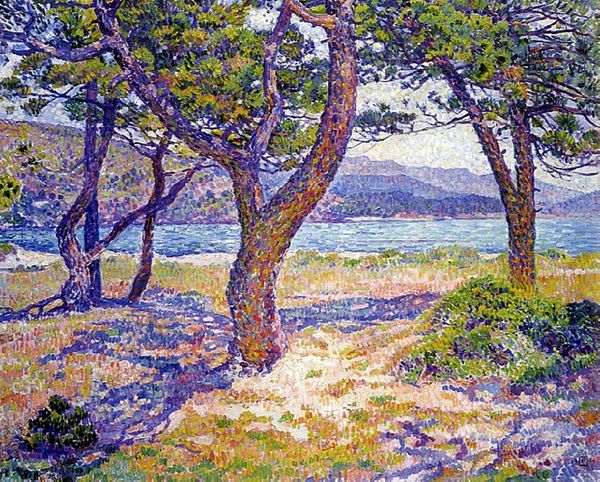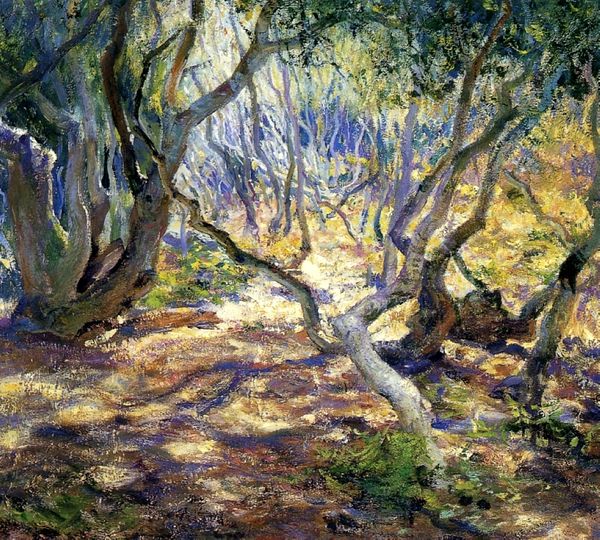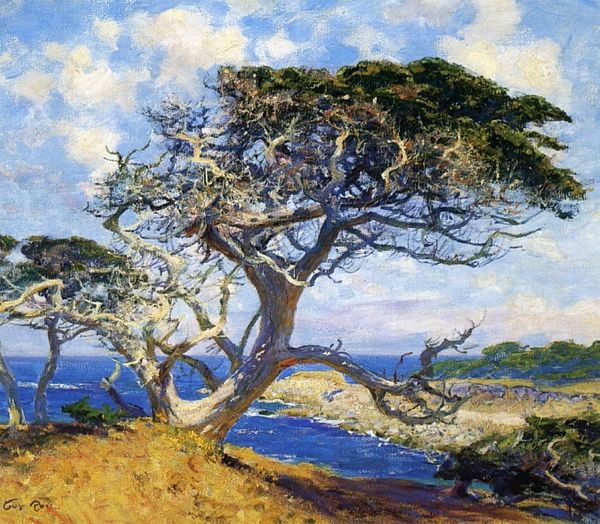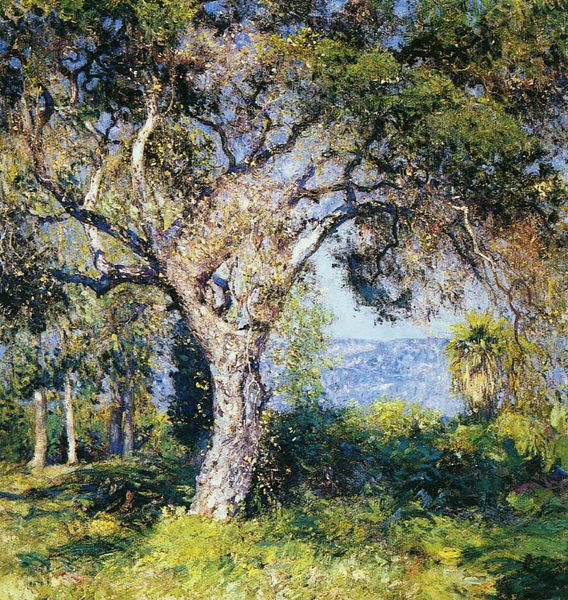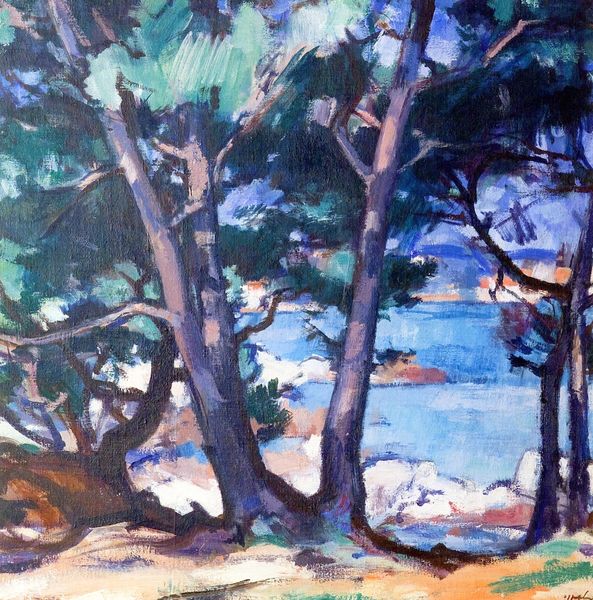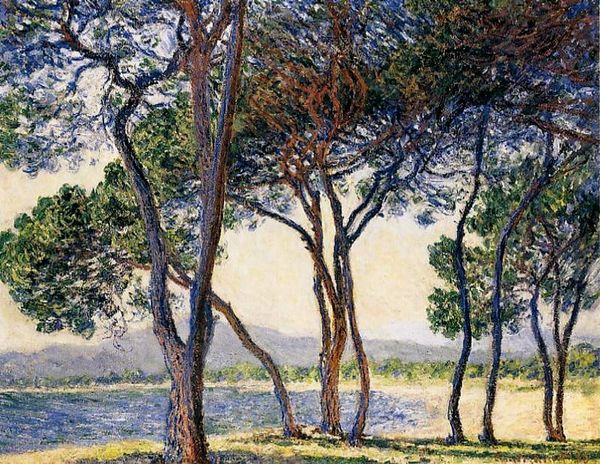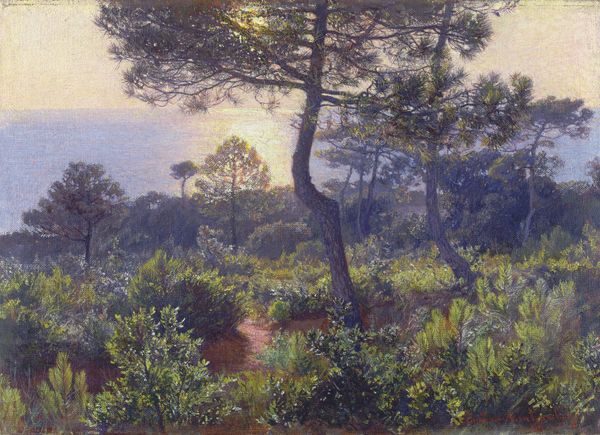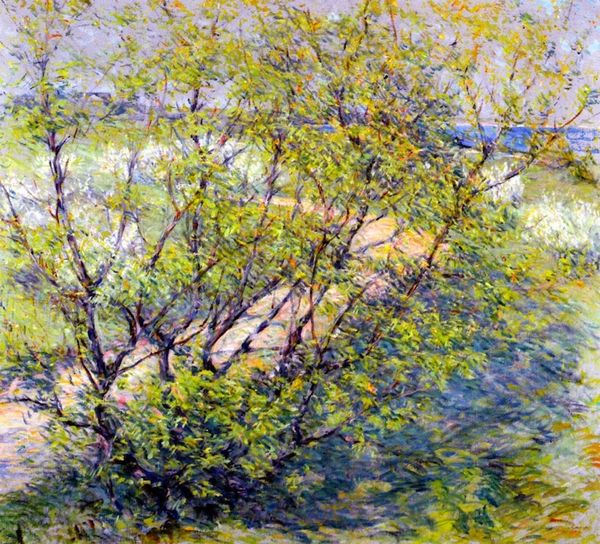
Dimensions: 76.2 x 101.6 cm
Copyright: Public domain
Editor: Theo van Rysselberghe's "Pines of Rayol," painted in 1912, showcases pine trees along a coast. The shimmering effect, created with what looks like oil paint, almost dissolves the forms. What's your take on this painting? Curator: Let's consider the physical act of making this piece. Van Rysselberghe, influenced by Neo-Impressionism, applied paint in tiny, deliberate strokes. It was painstaking labor, a direct contrast to the fleeting, "natural" scene he depicts. Where was this scene manufactured? Editor: I believe "Pines of Rayol" was painted en plein air, in direct contact with nature. Curator: Precisely. Think about the materials brought outdoors. Canvas, easel, paints manufactured elsewhere. He then applied these to represent a seascape, a place shaped by natural forces. The means of production and consumption are intertwined, isn't it interesting? Editor: It is, yes. Is he trying to make a statement by using this manufactured paint, and those man-made materials in a seemingly untouched area of nature? Curator: Perhaps not consciously a "statement," but it highlights the complex relationship. It reveals how our very act of observing and representing nature involves industrial processes, consumerism. Does that challenge any assumptions you had? Editor: Absolutely, I hadn’t thought about the painting as an industrial object itself. Thank you for widening my perspective on this work! Curator: My pleasure! It reminds us that even seemingly naturalistic scenes are products of material processes and social forces.
Comments
No comments
Be the first to comment and join the conversation on the ultimate creative platform.
